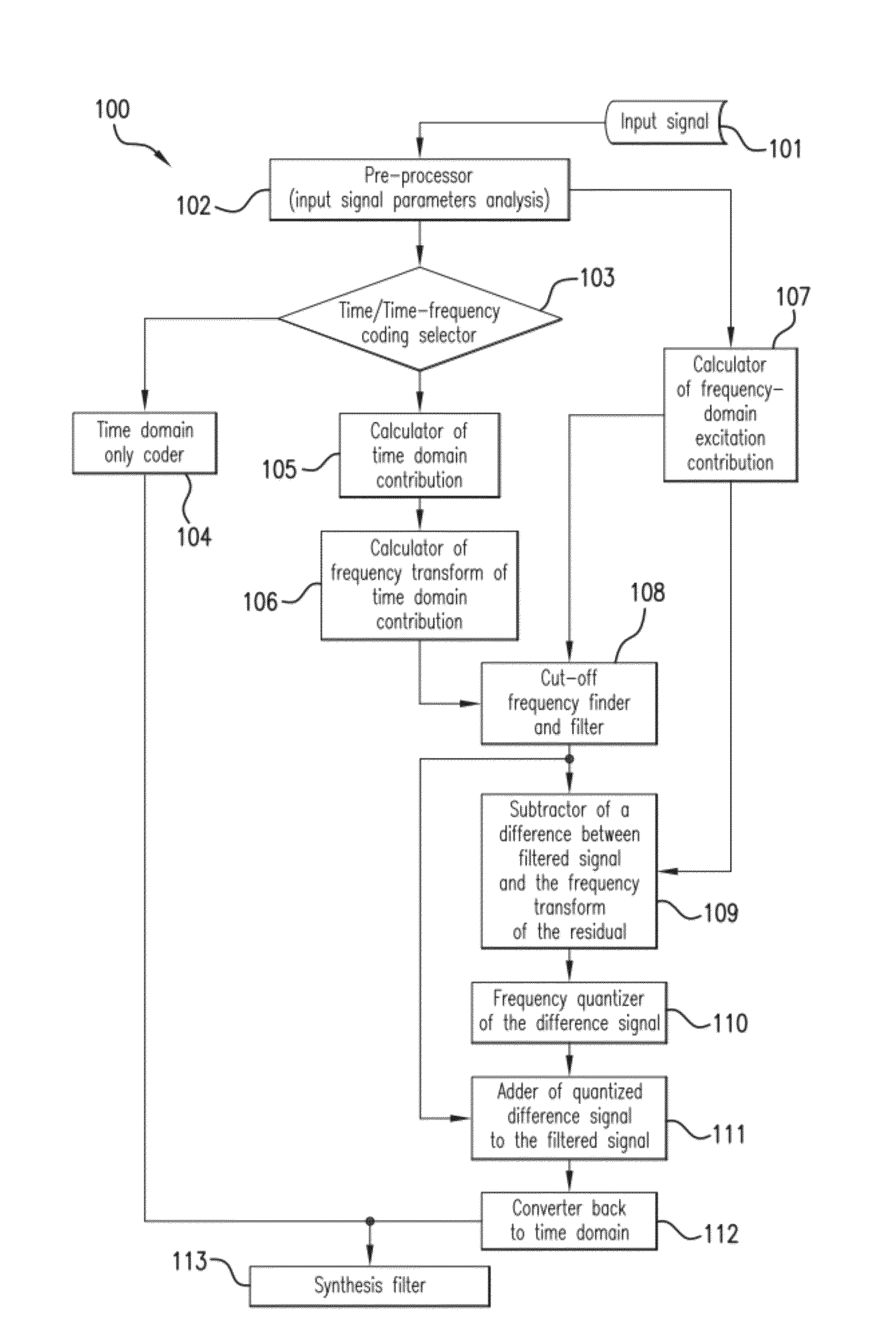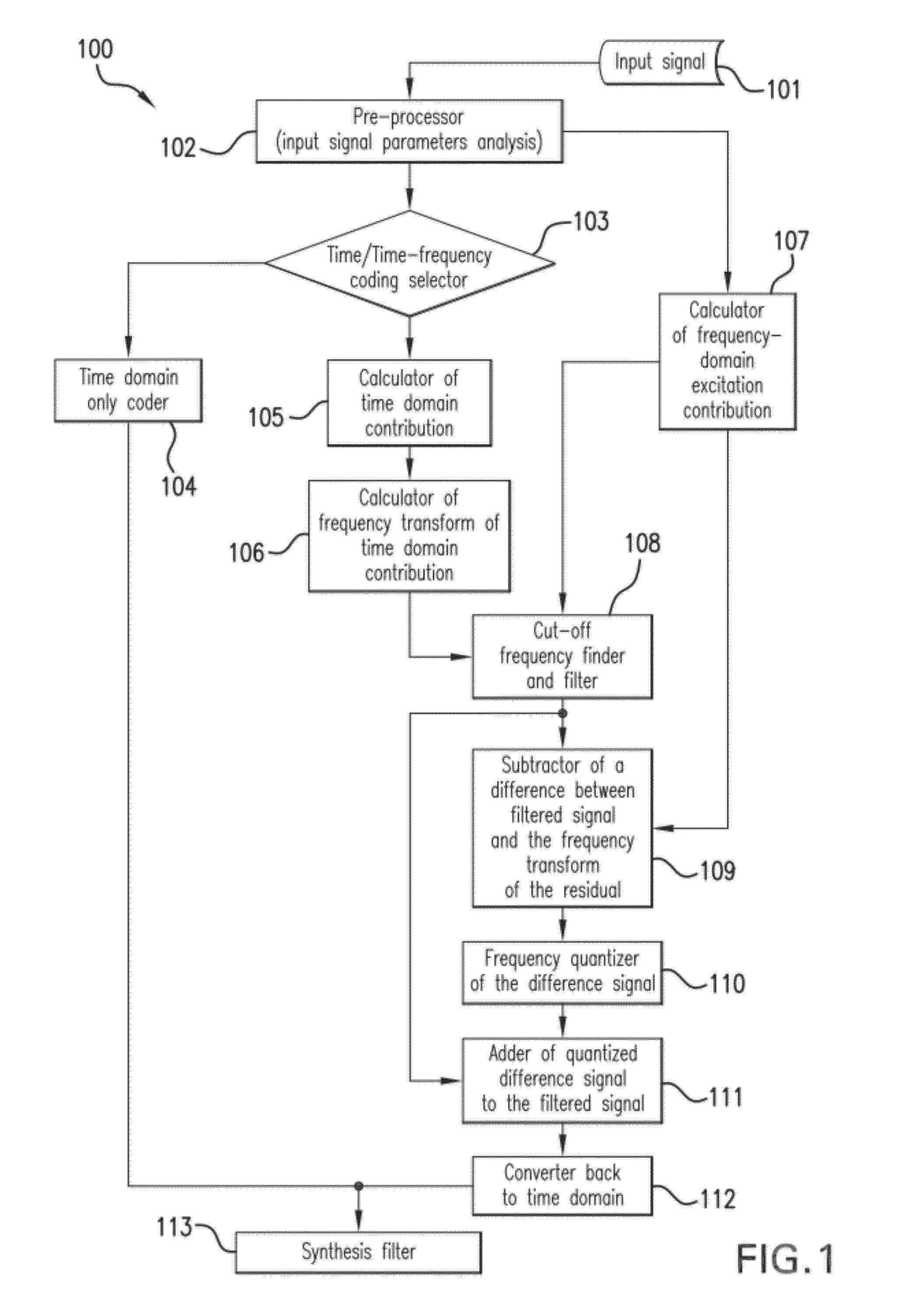Coding Generic Audio Signals at Low Bitrates and Low Delay
a generic audio signal and low delay technology, applied in the field of mixed timedomain/frequencydomain coding devices and methods for coding input sound signals, can solve the problems of low processing delay conversational codecs, unsuitable for generic audio signals, switching solutions typically require longer processing delays
- Summary
- Abstract
- Description
- Claims
- Application Information
AI Technical Summary
Problems solved by technology
Method used
Image
Examples
Embodiment Construction
[0022]The proposed more unified time-domain and frequency-domain model is able to improve the synthesis quality for generic audio signals such as, for example, music and / or reverberant speech, without increasing the processing delay and the bitrate. This model operates for example in a Linear Prediction (LP) residual domain where the available bits are dynamically allocated among an adaptive codebook, one or more fixed codebooks (for example an algebraic codebook, a Gaussian codebook, etc.), and a frequency-domain coding mode, depending upon the characteristics of the input signal.
[0023]To achieve a low processing delay low bit rate conversational codec that improves the synthesis quality of generic audio signals like music and / or reverberant speech, the frequency-domain coding mode may be integrated as close as possible to the CELP (Code-Excited Linear Prediction) time-domain coding mode. For that purpose, the frequency-domain coding mode uses, for example, a frequency transform pe...
PUM
 Login to View More
Login to View More Abstract
Description
Claims
Application Information
 Login to View More
Login to View More - R&D
- Intellectual Property
- Life Sciences
- Materials
- Tech Scout
- Unparalleled Data Quality
- Higher Quality Content
- 60% Fewer Hallucinations
Browse by: Latest US Patents, China's latest patents, Technical Efficacy Thesaurus, Application Domain, Technology Topic, Popular Technical Reports.
© 2025 PatSnap. All rights reserved.Legal|Privacy policy|Modern Slavery Act Transparency Statement|Sitemap|About US| Contact US: help@patsnap.com



